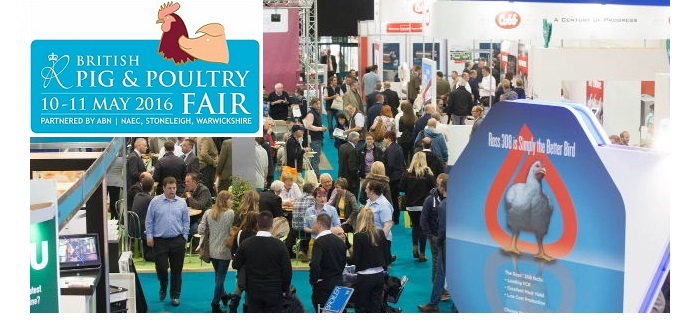Small changes can make a big difference to productivity, whether it’s making time to observe newly arrived chicks, adjusting the protein mix of feed rations or even picking up floor eggs each night and making sure the hens are perching.
These were just some of the headline points presented to poultry sector visitors by a number of forum speakers during this week’s British Pig & Poultry Fair, as the following summary reveals:
PD Hook’s Daniel Dring said: “The main focus should be on planning ahead, getting the poultry sheds clean, warm and well-prepared before the chicks arrive. It’s crucial to get the chicks off to a good start so we spend a lot of time trying to get the water sanitation right. Tip the chicks straight onto the feed and check for crop fill – just sitting and observing your chicks pays huge dividends.”
Applied Poultry’s David Speller said: “New technology can really help producers, including choosing the correct light spectrum for the birds, and time-lapse photography to monitor their behaviour. However, you don’t have to be a technological whizz to make use of the technology. I believe somebody who is naturally good with animals isn’t always naturally good with technology. Outsourcing that work to a remote expert could be a better option.”
ABN poultry nutritionist, Ade Adebiyi, said: “Producers could improve performance and reduce their dependence on soya by using a mix of protein sources. Soya contains anti-nutrients like poorly digestible fibre, so replacing some of the soya protein with different protein sources improves gut health and potentially reduces the need for antibiotics. Super-dosing phytase enzymes also boost feed conversion ratios. We need to innovate. Then we can derive more from less.”
British Free Range Egg Producers Association vice chairman, James Baxter, said: “Investing in technology could provide good returns. I am using renewable energy to heat my free-range sheds, improving the air quality, litter quality, bird health and productivity. I also routinely feed probiotics to boost the birds’ gut health and immunity, drastically cutting veterinary bills. The optimum temperature for egg production is 23C. By heating our sheds and feeding probiotics we are reducing feed consumption by 4g/hen/day and cutting second-quality eggs by 1.5%. In total that’s a net saving of 0.679p/hen/day or 7.57p/doz eggs.”
Partners in Welfare’s Bob Waller said: “You don’t always have to spend lots of money to make significant savings. Walk the floor every night, pick up floor eggs and make sure the hens are perching. If you’ve got 16,000 hens at 90% production, a 5% level of floor eggs equates to 58 dozen seconds. That is £100s lost every day. It really is worthwhile getting it right at the start. Clearing up feed spillages, tackling wet litter and draining wet patches on the range all help in the long run. It’s a lot of little pennies, but they all add up.”


